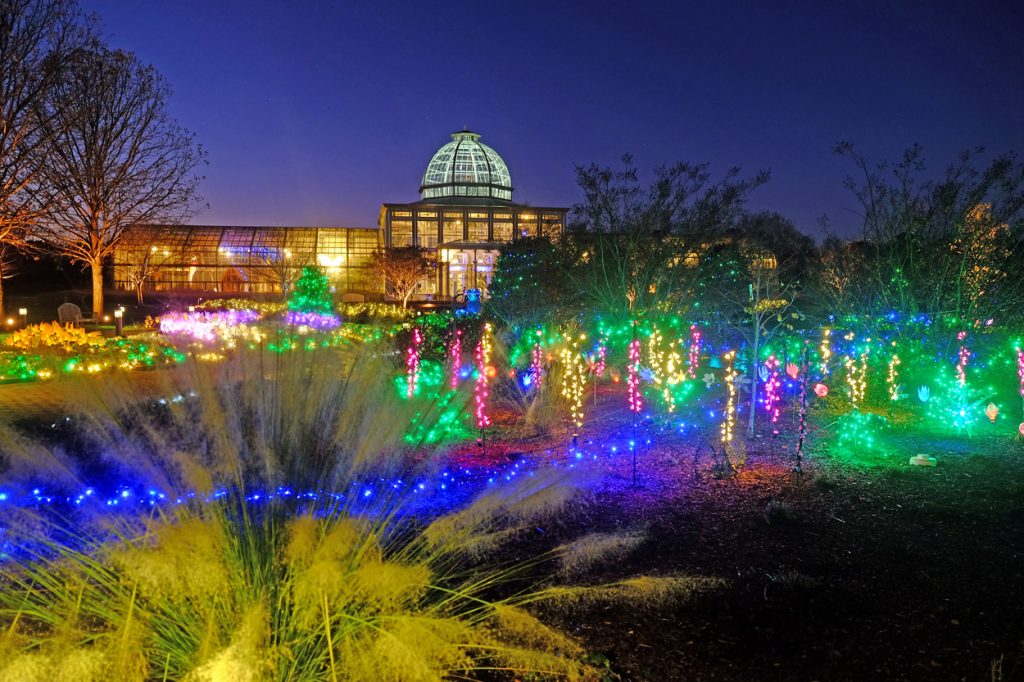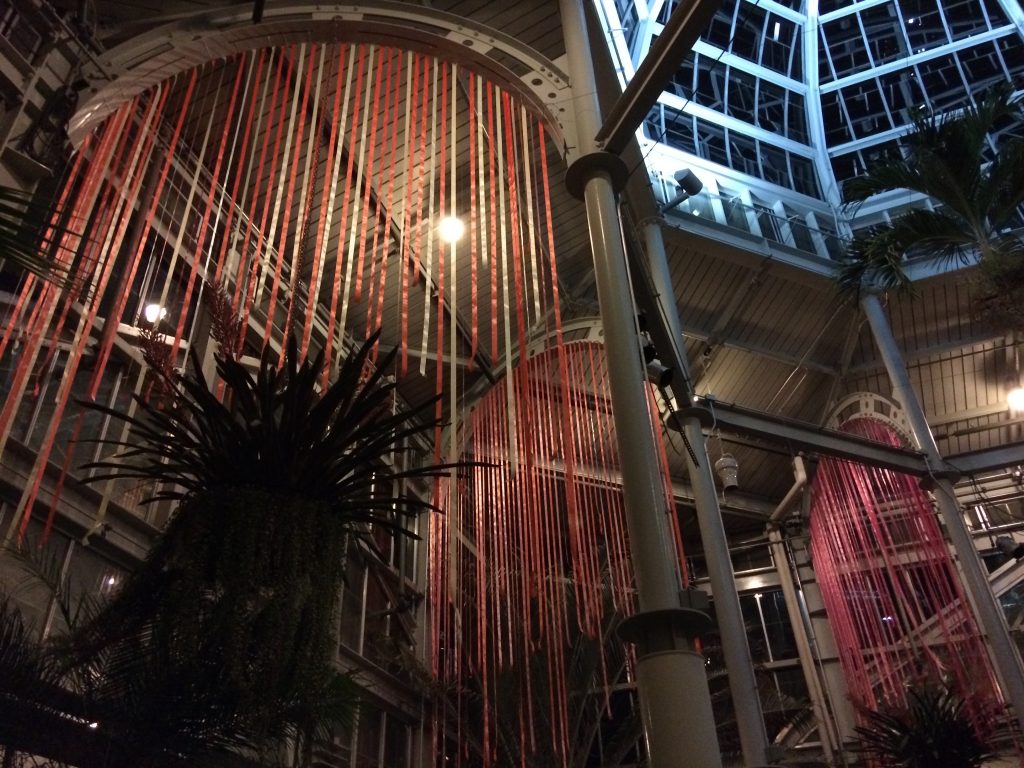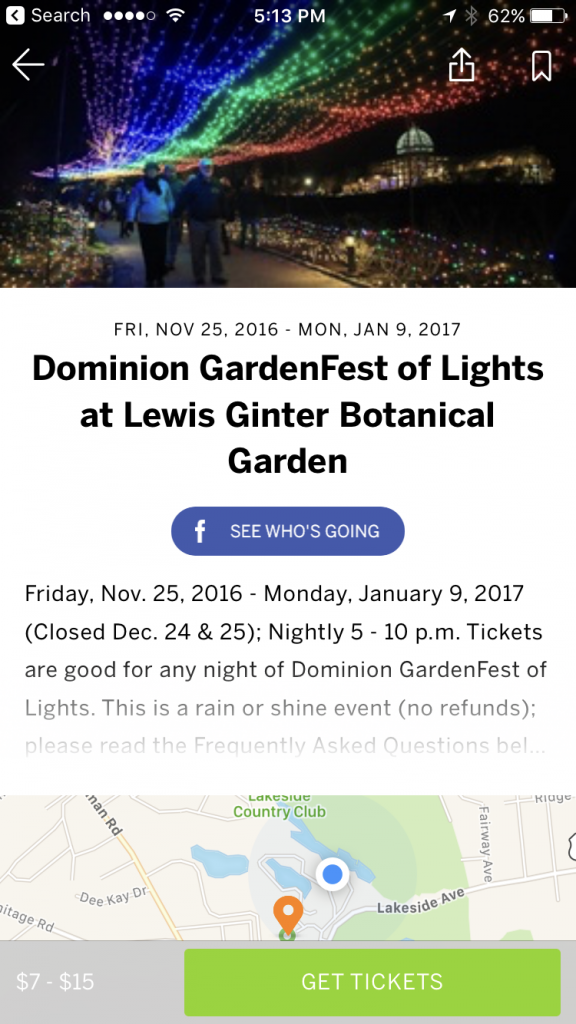Dominion Energy GardenFest of Lights Theme: Living Color
Living Color at Dominion GardenFest of Lights
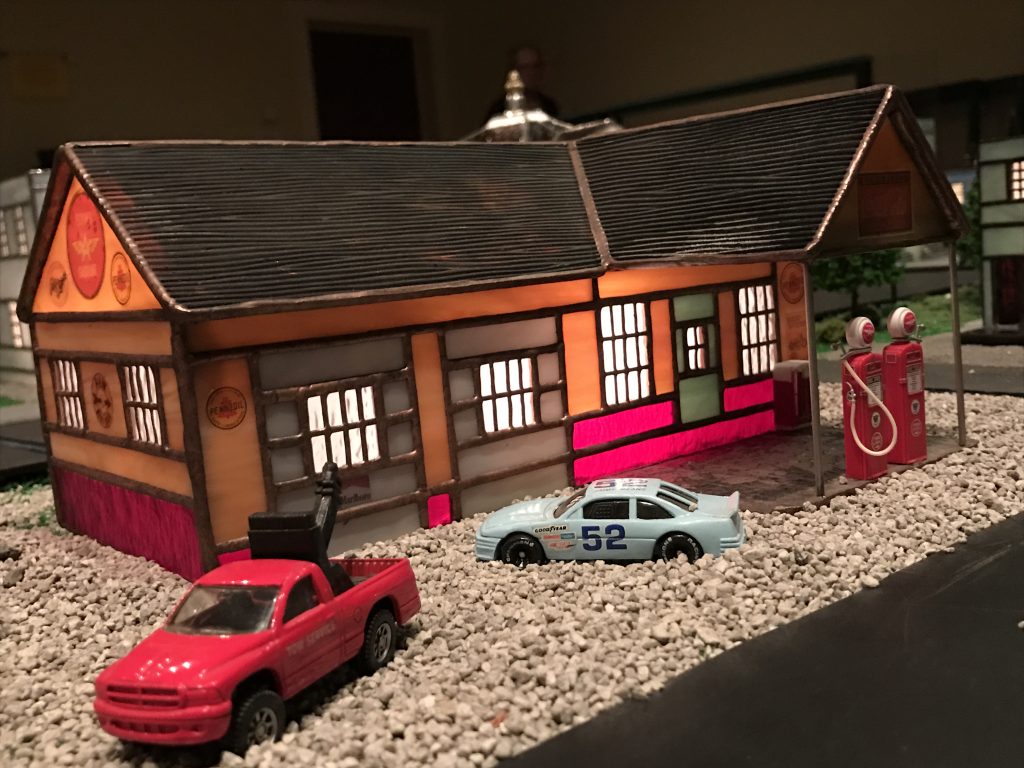
Stained glass train display on loan from Ron Dubbs (The Glass House). Special thanks also to John Exley and the Virginia Train Collectors.
This year, Dominion Energy GardenFest of Lights is an exploration of color: how color speaks to us, impacts nature, influences culture and even brings us joy. We can’t wait for you to explore all that we have planned: look through a teleidoscope that turns the real world into an exquisite picture of patterns and shapes made up of plants, flowers, light and brilliant color; learn amazing facts about color that you won’t believe until you see them; see a city fashioned entirely of handmade illuminated stained glass; and watch natural fibers turn colors using only plant compounds as dye. All while the little ones explore color at interactive light tables — learning how colors blend and interact.
And there’s more! In the Conservatory, escape to a world where color is king. You’ll be swept off your feet by ribbons of light and color in the dome house and brilliant pink and green bromeliads displayed in the shape of holiday trees.
As you round the corner into the North Wing, it’s as if all the colorful butterflies in the world have landed in rainbow formation on our 20-foot-tall Holiday Tree. They’ve brought with them fruits, flora, fauna and glass in corresponding colors. If you have kids (or the young at heart) with you they’ll be delighted you came here first to see the trains! Our dedicated volunteers have teamed up with the Garden’s
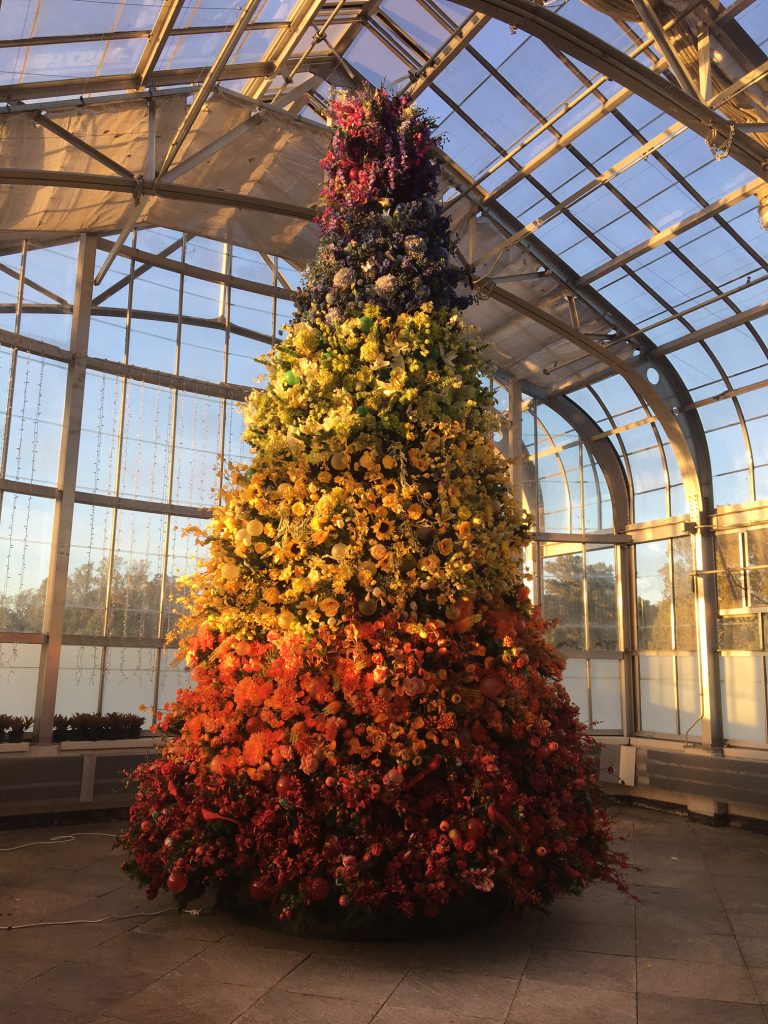
Tip: Arrive at GardenFest in late afternoon and head straight for the Conservatory to catch rays of sunlight streaming through the glass to illuminate our rainbow tree.
horticulturists to bring you two vignettes: A tiny town in a colorful landscape, inspired by an Irish village, the display is studded with pink and green pitcher plants (Sarracenia) and other whimsical botanicals. With roofs made from giant pine cone scales, and real stone fireplaces, you may feel like you are in another world. The second scene features an island, complete with sailboat, inspired by Bermuda, where model locomotives loop through mountain tunnels and thread between houses painted in tropical island colors.
Bright blooms will awaken your senses, not just with their color but with their fragrance. Did you know that winter is a peak time for blooming orchids and that many species of orchids are most fragrant at night? And those are just some of the indoor exhibits!
New This Year Outdoors:
Many of our guests’ favorites forms from previous years will reappear in new locations. (You won’t believe where we put the peacock this year!) I got the scoop from Operations Manager and GardenFest External Team Leader Justin Brown. Here’s what’s new:
In the Central Garden, look for 45 giant orbs that change colors and dance with light! If you stand there mesmerized for a few minutes, we won’t blame you. It’s hard to pull yourself away from something so beautiful and rhythmic. Then, look for six colorful geometric cubes in front of the Conservatory!
More flowers! Remember the “bottle flowers” that debuted at GardenFest a few years ago, when we recycled plastic bottles, crafted them into elaborate blooms and turned them into iridescent lights? What’s better than bottle flowers? Giant flowers! Our very talented volunteers have worked with staff to create huge blooms that reach toward the sky. We’ve “planted” them alongside our garden of bottle flowers for an amazing display. The giant flower forms were handmade by local welder Carter Pollard and wrapped by our volunteer “Tuesday Lighting Crew” who have been working on a variety of GardenFest projects over the past nine months.
As you may know, at Lewis Ginter Botanical Garden our mission is education and our passion is connecting people through plants to improve communities. We like to sneak in as much education as we can each time you visit. You may think you came the GardenFest just to look at pretty holiday lights, but when you see the connection that pollinators have to plants (and humans) you’ll be glad we threw in a little learning. In the Children’s Garden this year, your kids will discover why some plants attract bats as pollinators while others attract bees, butterflies, wasps, or even flies. The GardenFest Pollinator Garden explores different pollinator relationships such as bats and cactus, milkweed beetle and milkweed , moth and night bloomers and bees and native flowers, all in giant lights.

Chameleons! That most remarkable creature of all, the chameleon, has inspired us to create a game of hide-and-seek in lights. See if you can find all four colorful chameleons hiding in the Garden as you explore Dominion GardenFest of Lights.
New! Chameleons: Play Hide and Seek with our Colorful Friends
You may have to look very hard to find the four chameleons hiding in the Garden during Dominion GardenFest of Lights. The clever creatures feature colors from green to gold to red to blue to yellow and every color in between. Hint: you can be sure they are hiding in plain sight, so look closely! They’ll pop out when you least expect them in the Central Garden, the Asian Valley, at Bloemendaal House and in the Children’s Garden. Their names: Fufu, Gertrude, Max and Boo, but you’ll have to figure out which one is which.
Fast Fact: Although it’s a common myth that chameleons change color in order to camouflage, this is actually not true. Chameleons most often change color to alter the temperature of their body, to attract a mate, or to express how they feel.
Insider Info From the GardenFest Designer
Brown’s partner in design is Shannon Smith, who, in addition to being GardenFest Coordinator, is also a Senior Horticulturist here at Lewis Ginter Botanical Garden. She explains,”We’ve really tried to highlight color in the natural world. In this day and age, color is everywhere, but it is mostly synthetic. People think of it as a man-made creation. But that’s a recent phenomenon. We wanted to explore all the roles that color has played in nature, in the evolution of plants and pollinators — colors for defense or for mating, or the role of plants for the colors creating all the natural dyes we use to adorn ourselves.”
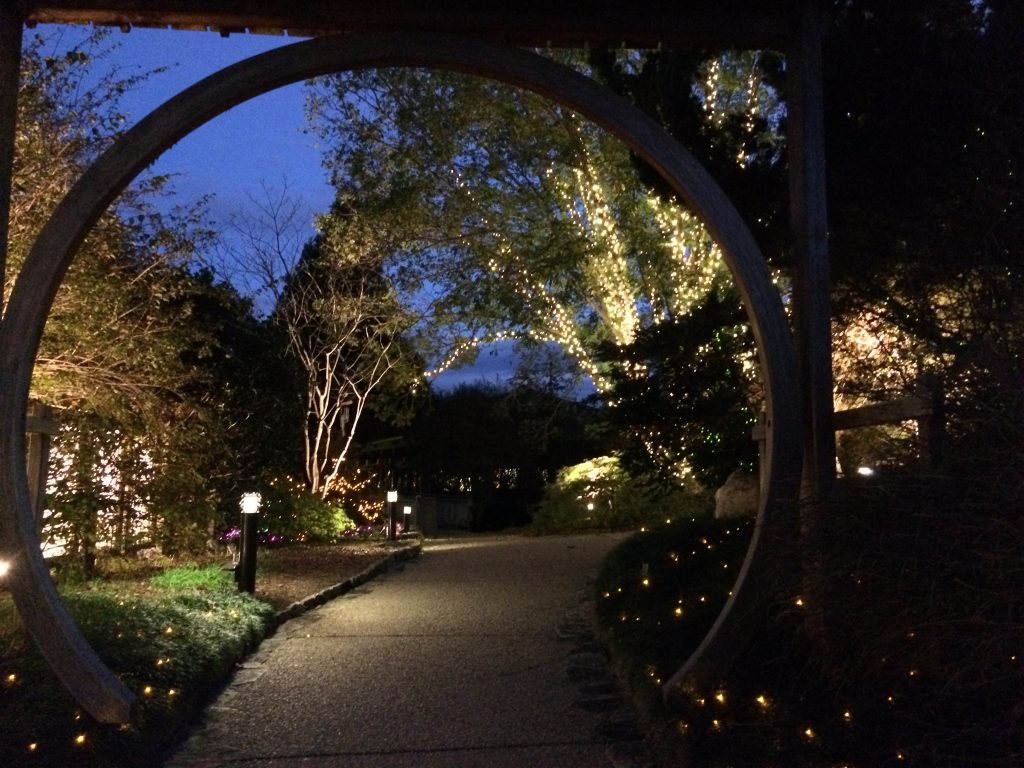
If you look through the Moon Gate in the Asian Valley you’ll see the wingnut tree (Pterocarya stenoptera) wrapped elegantly in white, to highlight the graceful beauty of its simple form. Photo by Susan Higgins.
In the midst of all this color there is plenty of simple beauty, too. One of Smith’s personal favorite displays highlights the simplicity of nature. If you look through the Moon Gate in the Asian Valley, you’ll see the the wingnut tree (Pterocarya stenoptera,) wrapped elegantly in white to highlight the graceful beauty of its simple form.
Kaleidoscope vs. Teleidoscope
Have you heard of a teleidoscope? It’s like a kaleidoscope, but the fractal images you see when you peer into its lens are made from colorful real-life objects — in this case, a succulent plant display on a lazy Susan in the East Wing of the Conservatory. We’ll have two of these fascinating devices — one at child and wheelchair level, another for adults.
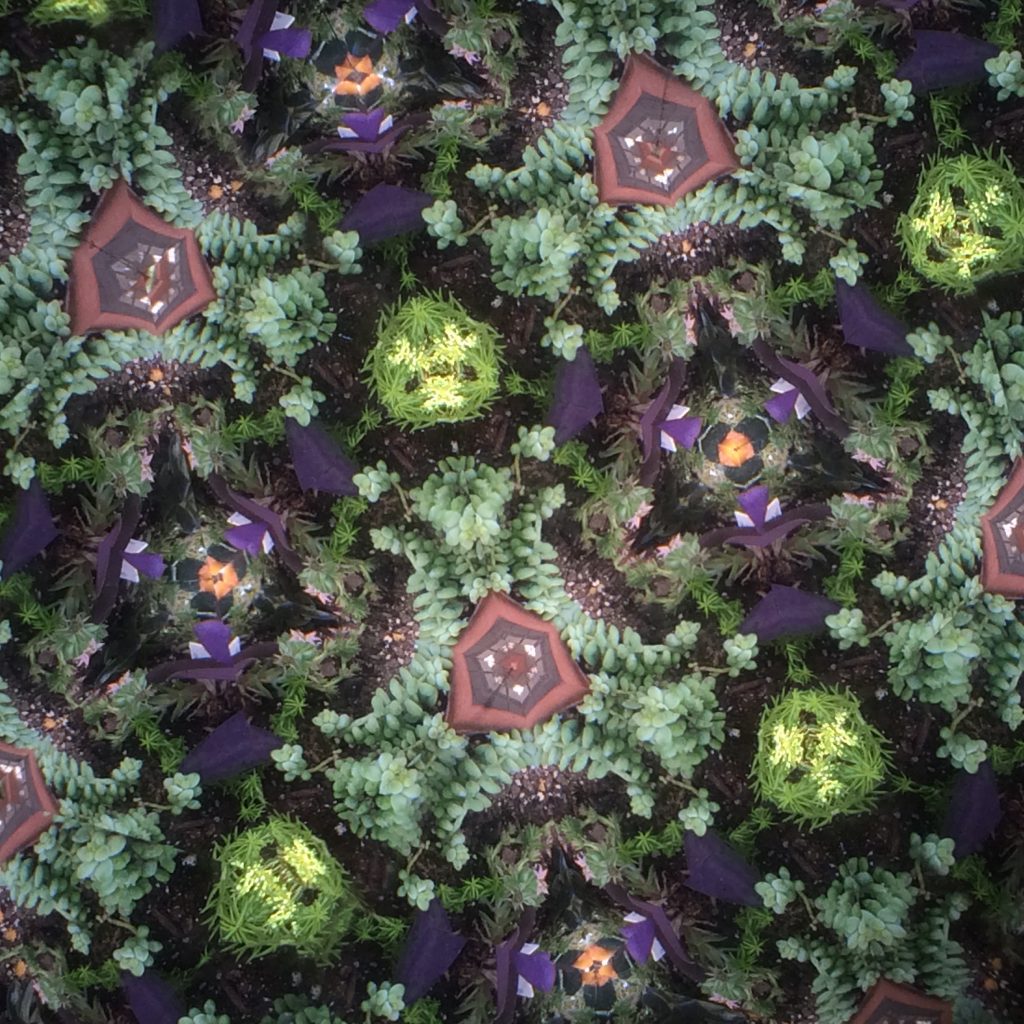
Capturing the beauty is easy! Just hold your smart phone up to the teleidoscope eyepiece and shoot. Image by Laurel Matthew.
The Original Handheld Device
Invented before touch screens or selfies, cameras or televisions, typewriters or laptops . . . before even the light bulb, the kaleidoscope created quite a stir as “kaleidoscomania” spread throughout England. The streets of London became populated with preoccupied pedestrians — people walking with one eye on their kaleidoscope and the other eye often closed!
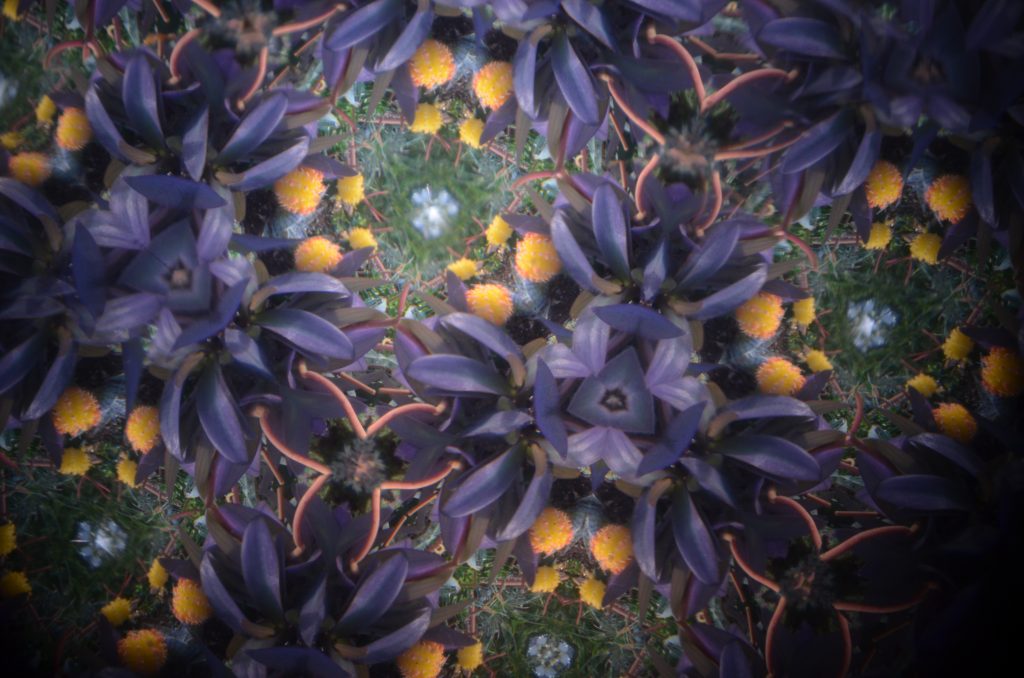
The view from inside a teleidoscope: purple and yellow in all sorts of shapes and forms. Image by Laurel Matthew.
The dangers of this diversion were greatly debated. Some felt that attention should not be pulled away from reality and into the kaleidoscope’s immersive illusions – especially when there was such glorious beauty in the natural world. Maybe you know people who struggle to separate from their handheld devices and stay tuned in to the color and beauty of the natural world. Visiting Lewis Ginter Botanical Garden is a great start!
Speaking of handheld devices.…. the other big change at this year’s GardenFest is that for the first time, we are using an online ticketing service called Eventbrite. The biggest advantage of this new service is that we expect it to cut wait time, so that you have more time to enjoy Dominion Energy GardenFest of Lights. Guests who buy tickets via Eventbrite, or who have paper tickets in hand, will have the option of using our new express entrance — open during our busiest times on select nights (5:30 – 8:30 p.m.) Look for the express entrance adjacent the Kelly Education Center, near the Garden Shop. Please note your entire party will need to be present with tickets in hand (either paper tickets or on your smartphone) to enter via the express entrance.
But we don’t want to spoil the surprise and tell you everything about GardenFest! Discover for your self all the wonder in the world of living color.
